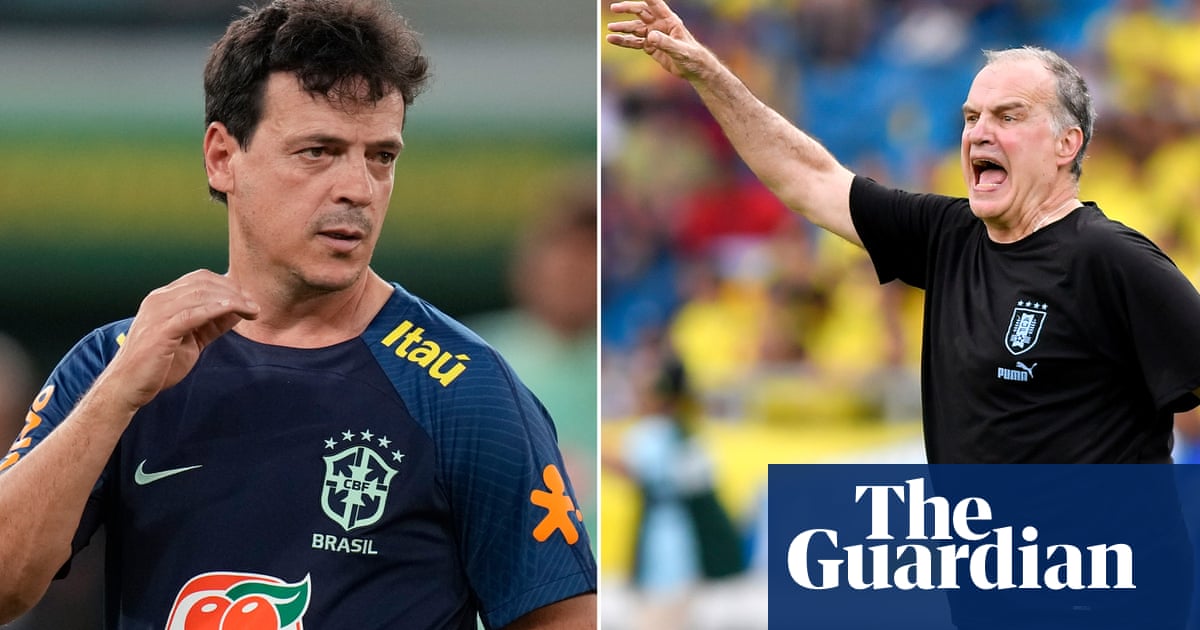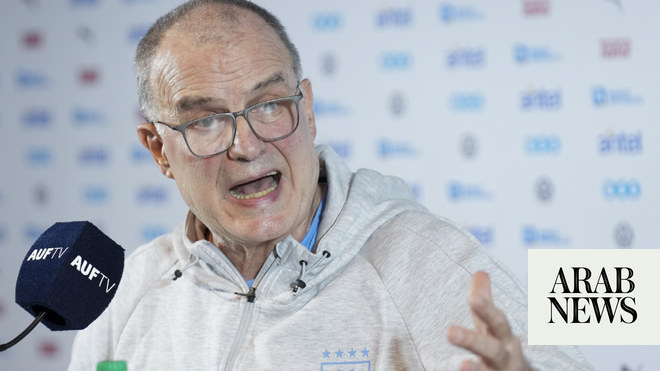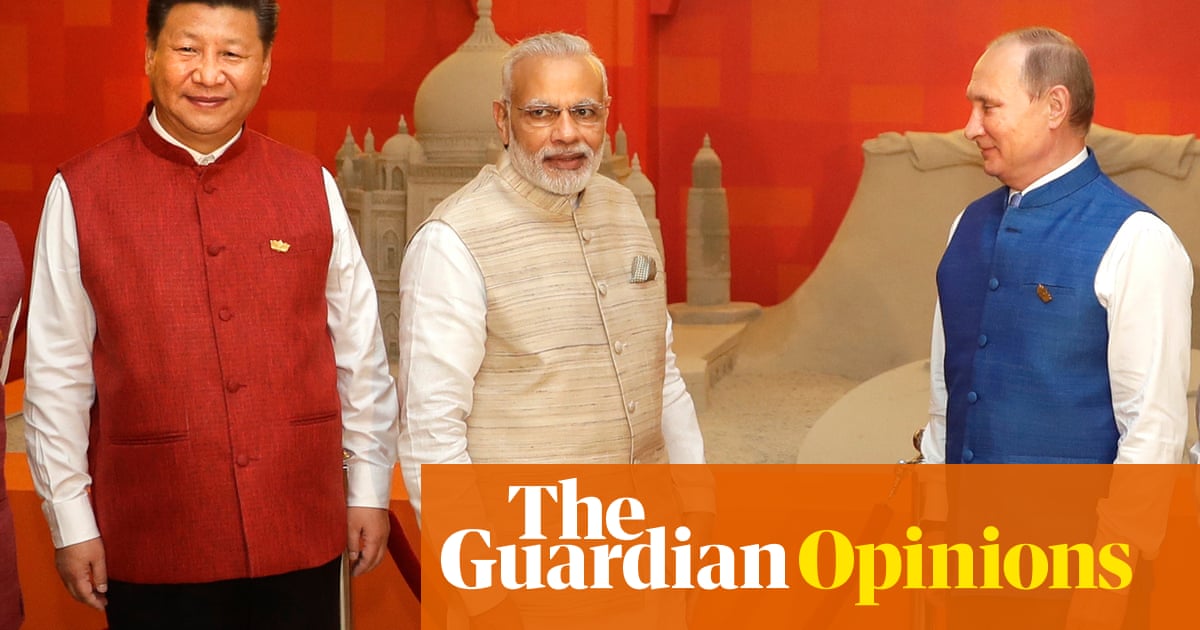
Brazil could not have enjoyed a better start to the Fernando Diniz era than their 5-1 trouncing of Bolivia in their opening World Cup qualifier in September. Rodrygo and Neymar both scored twice, with the latter surpassing their fellow Santos academy product Pelé in the country’s all-time scoring ranks. Diniz is on a personal crusade to bring joy back to the Brazilian people and make them relish watching the Seleção again. He briefly achieved this in Belém, where a boisterous crowd roared on the team and looked genuinely pleased by a rare chance to see them up close.
A stuttering 1-0 win over Peru in Lima in his second match showed there is still work to be done, but the visit of Venezuela to Cuiabá last Thursday night should have been the perfect opportunity to get things back on track. Like Belém, the city in Mato Grosso is way off the beaten track – it is closer to Bolivia than Rio or São Paulo. Fans in the Arena Pantanal were lively from the start and sang about not having seen the team for 20 years. By full time, though, things had turned sour. Brazil were booed off after a 1-1 draw, with Neymar having a pack of popcorn thrown at his head.
Neto, the Brazil player turned hugely popular TV pundit, stoked the flames by encouraging fans to fill their popcorn packs with excrement and throw them at Brazil next time; Neymar responded by calling him an “arsehole” on social media. Over at Globoesporte, Mauricio Saraiva was scathing, calling the “ridiculous” draw against a “fragile” Venezuela team a “fiasco”. He criticised the team for moving the ball too slowly and concentrating too much play on one side of the pitch – a common feature of Diniz’s style. He also singled out Neymar for a lack of concentration and responsibility.
When asked about the popcorn, Neymar said he was “very sad” and pointed out that he was not back in Brazil “on holiday”. He has a point. As well as being Brazil’s top scorer, with 79 goals, his assist for Gabriel’s goal against Venezuela was the 58th of his career – no player has set up more goals in the history of international football.
The Brazil players defended themselves after the match, some suggesting they had been hampered by the state of the pitch. Ederson made the point that the “absurd” ticket prices – which cost R$300, a week’s pay for anyone on the minimum wage of R$1,300 – were out of reach for everyday Brazilians. With the cost of attending a match so high, the demands from fans also skyrocket.
Tensions are simmering, but Brazil have a chance to put things right when they face Uruguay at the Estadio Centenario on Tuesday night. The new manager will be hoping for the same coming-of-age moment Tite enjoyed in Montevideo six years ago, when his team came from behind to win 4-1 – a victory that united the public and media.
The latest instalment of the Clássico do Rio Negro is Diniz’s biggest test so far. It also sets up Brazil’s meeting with world champions Argentina in November. The manager, who has led Fluminense to the Copa Libertadores final in his day job, has a few problems to solve. Brazil have failed to score from open play in more than 180 minutes of football: two near-post headers from centre-backs Marquinhos and Gabriel (both from Neymar corners) are all they have to show from their latest two outings.
Diniz was signed on a one-year contract to rediscover the chaotic magic that had apparently been lost by Brazilian football’s recent submission to the supremacy of European systems play and its more regimented order. But so far (save for the 5-1 victory over a poor Bolivian side) the engine driving Diniz’s wheels of revolution appears to be stalling.
Despite a second set-piece assist in as many games, Neymar’s performance was disappointing. The frequencies flowing between Brazil’s No 10 and his teammates seemed to be scrambled, as if their wires had somehow been crossed; any fragments of clear communication were quickly drowned out by the incoherence of static. One interesting statistic thrown up after the Venezuela match is that the Seleção player who has provided the most assists to Neymar is Oscar. The former Chelsea midfielder set up just five of his 79 goals, but they have not worn the yellow and green together since 2015.
His longevity and impact on the pitch cannot be doubted, but Neymar’s attitude and antics make him a divisive character. Fans did not react kindly when it was reported that he, Vinicius Jr and Richarlison partied with a group of women after the Venezuela match – especially as Neymar had just celebrated the birth of his daughter. His manager dismissed the allegations about the party, with Brazil’s press officer calling them “fake news”. In any case, Diniz has bigger concerns.
The draw with Venezuela has provoked serious questions about whether “Dinizismo” can translate to international football. He was never going to transform the team radically in a few games but it’s fascinating to observe the dynamics as Brazil’s stars struggle to grasp their new coach’s alien system. Unlike many elite managers in Europe, Diniz places the onus to be creative firmly on the players. He does not proclaim to program systems that solve problems for the players; rather, his is an organic order that compels players to imagine their own responses to the riddles posed in games.
The midfield is essential to his team but Casemiro and Bruno Guimarães have struggled to recalibrate their Premier League-proofed styles to the Latin flows of Dinizismo. Too often they were out of sync with the players around them against Venezuela, repeatedly steering the play away from close options in the ball-zone. Tight space combinations were foregone in favour of contrived circulations around the expanse of the field. Play was driven forward and wide when the situation required a pause, a change of rhythm to allow the team a moment to consolidate.
Diniz’s style is based around close-proximity play, with players gathering around the ball on one side of the field. This unusual tactic, known as “tilting”, allows the players to form swarm-like clusters in possession while using the security of the touchline to aid them if the ball is lost. It’s a reinterpretation of the classic coaching idea: “The touchline is the best defender.” But, even when the Brazilian players were sufficiently gathered around the ball in these tilt situations, they lacked the subtle movements required to create “tabelas” and “escadinhas” (tables and stairs) – the elusive staircase-like structures that have become a trademark of Fluminense’s ball progressions.
Richarlison was also out of sorts against Venezuela. The centre-forward’s timing and touch were off as he failed to provide the wall-passes that Rodrygo, Vinicius Jr and Neymar thrive on. It was no surprise the Spurs forward was replaced by Gabriel Jesus, who is better at linking the team. Casemiro and Guimarães were also substituted by Diniz. André, the young Fluminense midfielder who was brought on, is seen by many as the natural remedy to Diniz’s midfield malfunctions. He is also a target for Liverpool.
Brazil’s popcorn-hurling critics are already running out of patience with Diniz’s idiosyncratic approach, but the changes he is proposing are far from trivial; it’s not as simple as tweaking a formation or picking new players. Diniz dreams of dispensing with pre-designed systems and replacing them with the organic interpretations of the players.
All of this only serves to heighten the significance of the match against Uruguay. For the first time in his career, Diniz will face off Marcelo “El Loco” Bielsa, a manager who once reported claimed: “If my players were robots, I’d win everything”. A tongue-in-cheek statement perhaps, but Bielsa is undoubtedly obsessed with the intelligent design of meticulously constructed football systems. The Argentinian’s ideas and precision-engineered theories have been cited as major influences by many modern coaches, including player turned strategic grandmaster Pep Guardiola.
Bielsa’s turbocharged automations and slick positional rotations are drilled with relentless intensity to embed his patterns into the minds and bodies of his players so that, come matchday, there can be no doubt about the order with which the team will organise and function. He says he “prefers organisation to the freedom and mess that inspiration demands”. In Montevideo, this orientation towards order will clash head-on with the chaos and unpredictability of Dinizismo.
The differences between these two enigmatic South American coaches are stark and both men are entirely committed to the authenticity of their beliefs. It will be fascinating to watch Bielsa’s pressing system collide with Diniz’s disregard for structural orthodoxy. Will Uruguay left-back Joaquín Piquerez be instructed to follow Rodrygo when Brazil’s right winger wanders over to play with Vinicius on the left? It is an alluring prospect.
The biggest game so far this season in the Premier League saw Mikel Arteta’s Arsenal edge out Pep Guardiola’s Manchester City after what seemed like a lifetime of attritional stalemate. It was a footballing Spiderman-meme, with two sharply dressed field commanders apparently intent on having their teams mirror the postures and manoeuvres of the other. Expect to see something very different when Uruguay host Brazil.
Of course, the scoreline will drive the narrative when the final whistle blows in Montevideo – and fair enough, Diniz’s team needs to respond after Venezuela – but there are far deeper currents running through this intriguing contest. So much top-level football is now converging towards a tactical homogeneity characterised by the imposition of pre-designed tactical systems. Diniz’s team facing one of the architects of this style offers us a tantalising opportunity to sample what a more diverse tactical landscape might feel like.












